

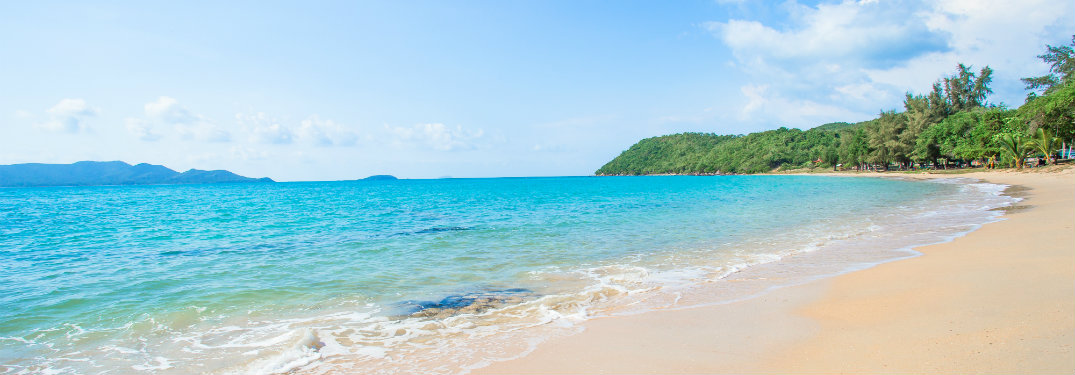

Guam

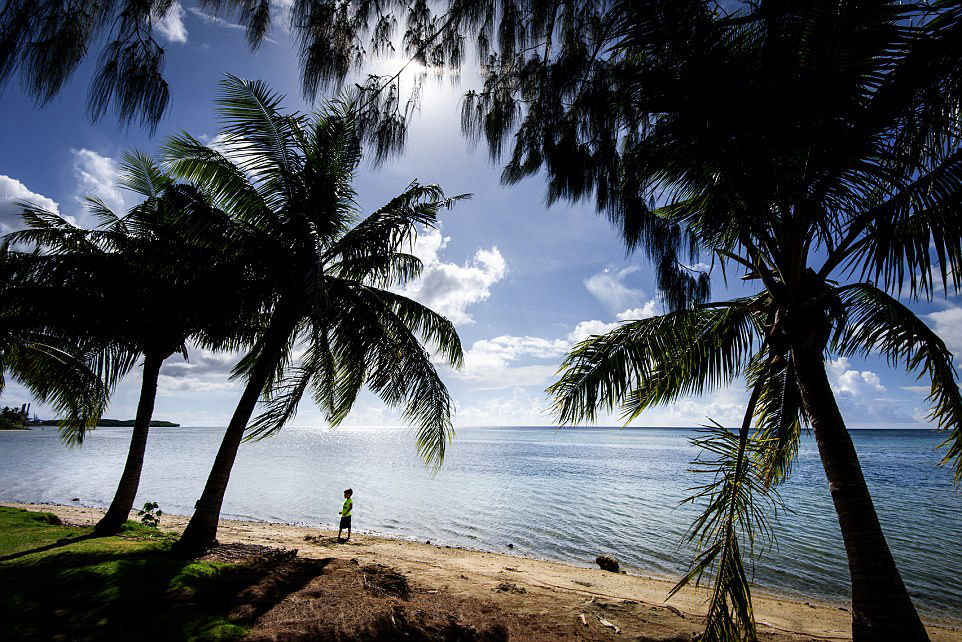
Guam today, a beautiful island noted for its stunning beaches and varied cuisine. It is the largest island in Micronesia - about a third of the size of London - and attracts around a million Japanese tourists every year thanks to its consistently hot weather of between 75 to 85 degrees Fahrenheit. It also features gigantic hotel complexes, luxury shopping malls and even plenty of wedding chapels.
Guam is a U.S. island territory in Micronesia, in the Western Pacific. It's distinguished by tropical beaches, Chamorro villages and ancient latte-stone pillars. Guam’s WWII significance is on view at the War in the Pacific National Historical Park, whose sites include Asan Beach, a former battlefield. The island’s Spanish colonial heritage is evident in Fort Nuestra Señora de la Soledad, atop a bluff in Umatac.
An unofficial but frequently used territorial motto is "Where America's Day Begins", which refers to the island's close proximity to the international date line.
Before World War II, there were five American jurisdictions in the Pacific Ocean: Guam and Wake Island in Micronesia, American Samoa and Hawaii in Polynesia, and the Philippines.
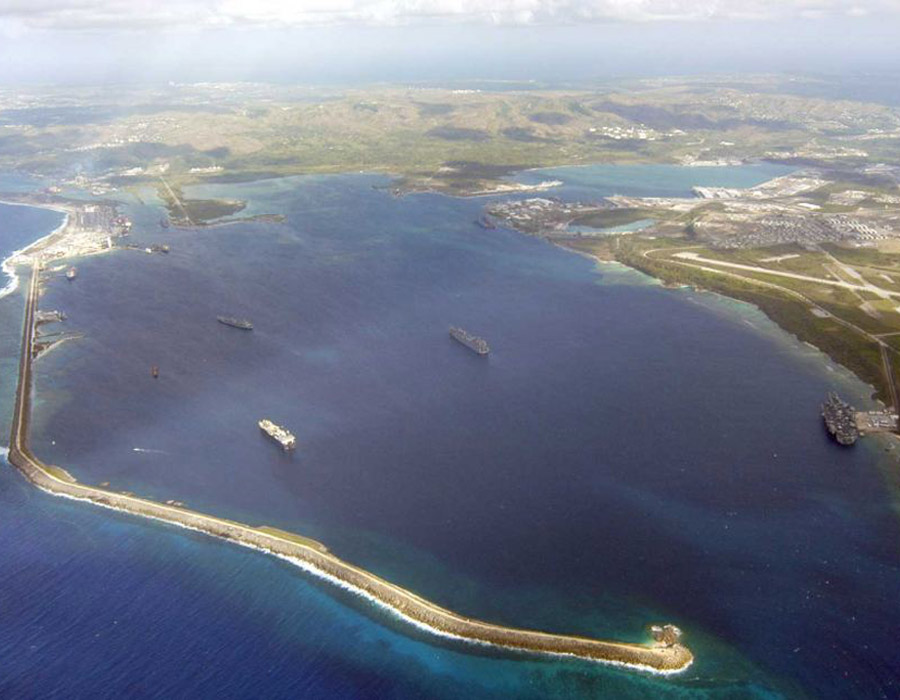
Apra Harbor on US Naval Base Guam.
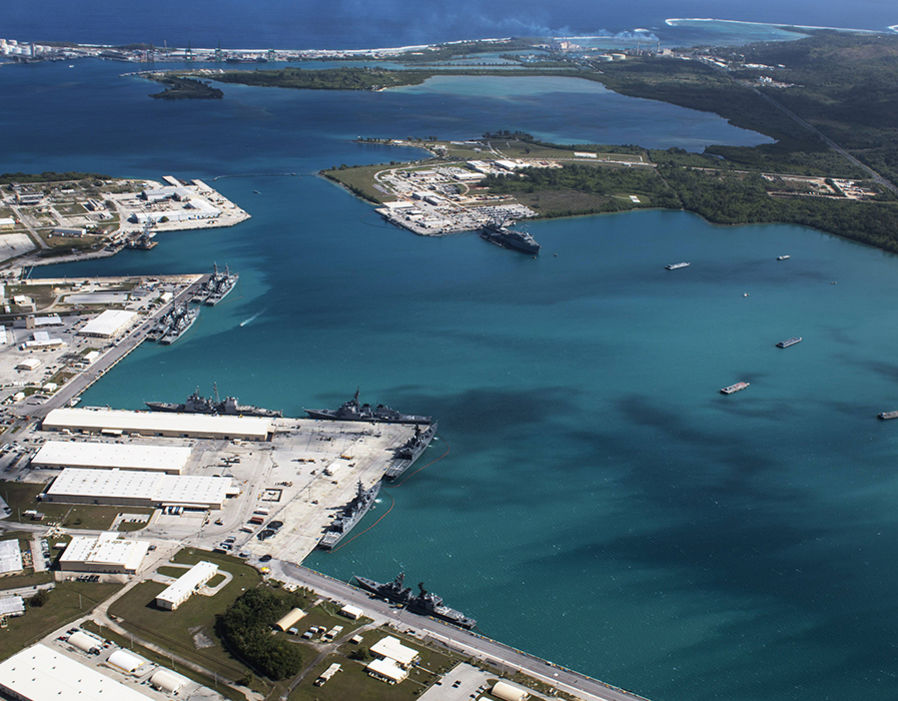
An aerial view from above US Naval Base Guam (NBG) showing Apra Harbor with several navy vessel in port.
Click on any photo to zoom
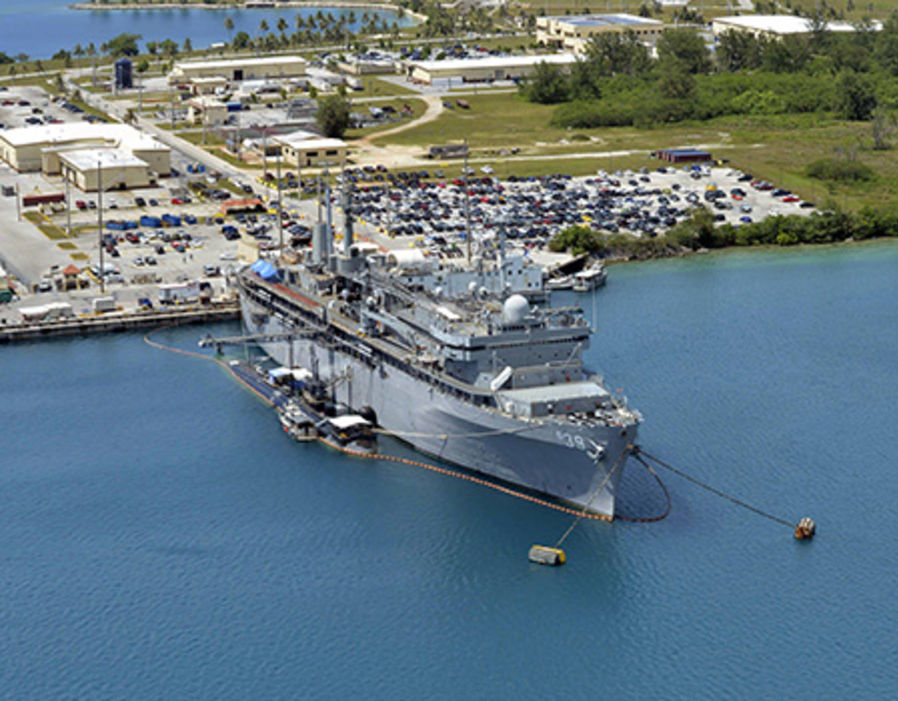
Submarine tender USS Emory S. Land and the Los Angeles-class attack submarine USS Topeka pier side in their home port at Polaris Point, Guam.
First Battle of Guam (1941)
Part of the plan of the Empire of Japan during World War II was to capture Guam. By March of 1941, the Empire of Japan was already flying photo reconnaissance over the island. By September of that year, the plans for an invasion of Guam were completed. The US government did not think it would be practical or possible to defend the island of Guam if the Japanese attacked it. Even with the low priority given to Guam, small steps were taken to increase its defenses. By December 8th of 1941, George McMillin received notice about the Pearl Harbor attack. By 8:27 the same day, the Japanese were already attacking the Piti Navy Yard, the Marine Barracks and Libugon Radio Station as well as Panamerican Hotel and the Standard Oil Company. The USS Penguin, which was the largest vessel for the US Navy at the time, was sunk. By December 10th, the Marines surrendered after some resistance. The official surrender came from Governor McMillin at 6 pm that day. The toll of the Battle of Guam hit the Guam Insular Force Guards which saw 4 killed as well as 22 wounded. The US Marines reported 5 killed in addition to 13 wounded while the Navy reported 8 killed. For the Japanese side, only one naval soldier died in action while 6 were wounded. After the surrender, Pfc Kauffman was killed by Japanese troops. Back in 1938, the Navy asked for permission for new fortifications on Guam but the proposal was rejected.
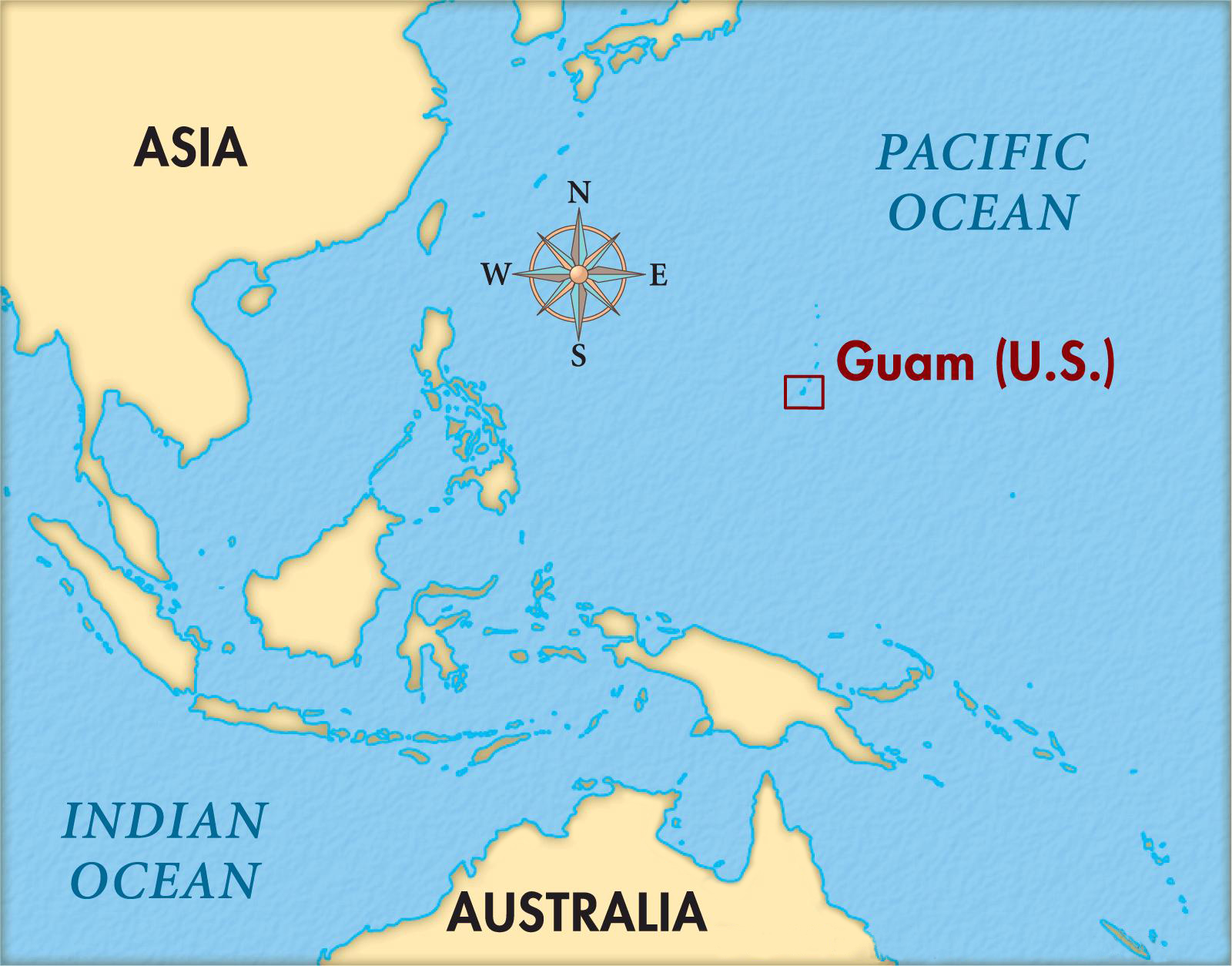
Click on map to zoom

Japanese occupation of Guam
Japanese Occupation
On December 7, 1941, hours after the attack on Pearl Harbor, Guam was captured by the Japanese, who occupied the island for two and a half years. During the occupation, Guamanians were subjected to beheadings, forced labor, rape, torture, concentration camps and forced prostitution. Approximately one thousand people died during the occupation, according to later Congressional committee testimony in 2004. Some historians estimate that war violence killed 10% of Guam's then 20,000 population.
The United States returned and fought the Battle of Guam from July 21 to August 10, 1944, to recapture the island from Japanese military occupation. More than 18,000 Japanese were killed as only 485 surrendered. Sergeant Shoichi Yokoi, who surrendered in January 1972, appears to have been the last confirmed Japanese holdout for 28 years in the forested back country on Guam. The United States also captured and occupied the nearby Northern Marianas Islands.
North Field was established in 1944, and was renamed for Brigadier General James Roy Andersen (1904–1945) of the old U.S. Army Air Forces as Andersen Air Force Base. American forces recaptured the island on July 21, 1944; Liberation Day commemorates the victory.
Second Battle of Guam (1944)
The Second Battle of Guam (21 July – 10 August 1944) was the American recapture of the Japanese-held island of Guam, a U.S. territory in the Mariana Islands captured by the Japanese from the U.S. in the 1941 First Battle of Guam during the Pacific campaign of World War II. In July 1944, US forces retook the island of Guam after weeks of fierce fighting, leading to over 7,000 American casualties and over 18,000 Japanese killed.
Guam, at 212 square miles (543 square kilometers), is the largest island of the Marianas, with a length of 32 miles (52 km) and a width ranging from 12 miles (19.31 km) to four miles (6.44 km) at different points of the island.: It had been a United States possession since its capture from Spain in 1898 until it was captured by the Japanese on 10 December 1941, following the attack on Pearl Harbor. During the Japanese occupation of Guam, it was not as heavily fortified as the other Mariana Islands such as Saipan that had been Japanese possessions since the end of World War I. But by 1944, Guam had a large Japanese garrison.
The Allied plan for the invasion of the Marianas, Operation Forager, called for heavy preliminary bombardment, first by carrier aircraft and USAAF bombers based in the Marshall Islands to the east, then once air superiority was gained, close bombardment by battleships, cruisers, and destroyers. Saipan, Tinian, and Guam were chosen as the targets due to their size, their suitability as a base for supporting the next stage of operations toward the Philippines, Taiwan, and the Ryukyu Islands; and the seaport at Apra Harbor was suitable for the largest ships; and air bases for Boeing B-29 Superfortresses could be built from which to bomb Japan. B-24 Liberators from the Marianas could also bomb Iwo Jima and the Bonin Islands, such as Chichi Jima.
The invasion of Saipan was scheduled for 15 June 1944, with landings on Guam tentatively set for 18 June. The original timetable was optimistic, however. A large Japanese carrier attack and stubborn resistance by the unexpectedly large Japanese garrison on Saipan led to the invasion of Guam being postponed for a month.
U.S. naval and air bombardments lasted from 11–13 June 1944, involving 216 carrier aircraft and land-based B-24 bombers from the Marshall Island. On the 12th and 13th of the month, 12 Japanese cargo ships and several fishing vessels were sunk. On June 27, U.S. Navy battleships and cruisers started shelling the island, joined by a U.S. carrier group on 4 July, and two more on 6 July.
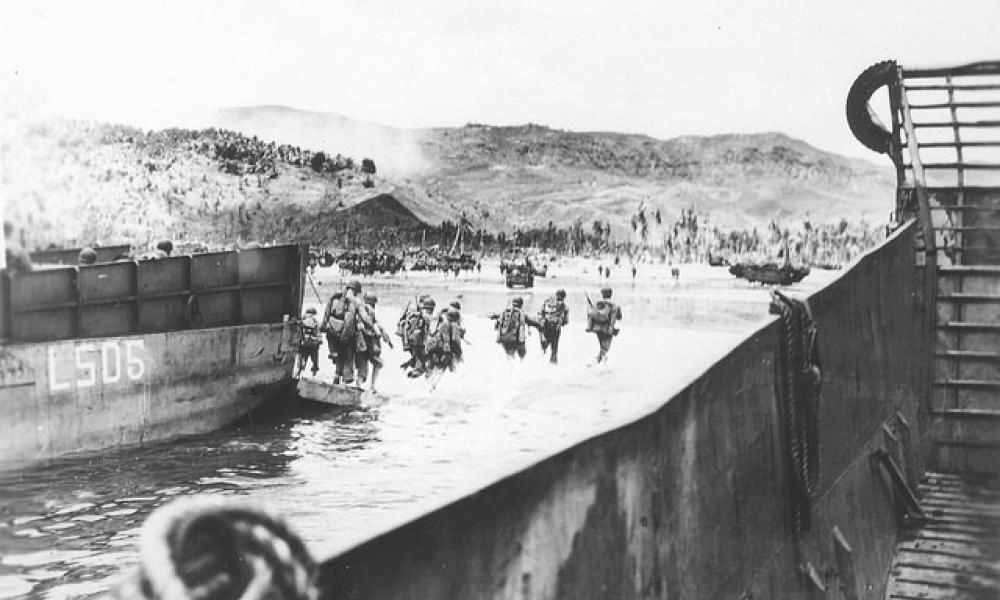
First Provisional U.S. Marine Brigade storms ashore in the re-taking of Guam, July, 1944.
Guam, ringed by reefs, cliffs, and heavy surf, presents a formidable challenge for any attacker. Underwater demolition teams reconnoitered the beaches and removed obstacles from 14–17 July. Despite the obstacles, on 21 July, the American forces landed on both sides of the Orote Peninsula on the western side of Guam, planning to secure Apra Harbor. The 3rd Marine Division landed near Agana to the north of Orote at 08:29, and the 1st Provisional Marine Brigade landed near Agat to the south. Japanese artillery sank 20 U.S. LVTs and inflicted heavy casualties on the landing troops, especially of the 1st Provisional Marine Brigade, but by 09:00 Marines and tanks were ashore at both beaches.
By nightfall, the U.S. Marines, and soldiers of the 77th Infantry Division had established beachheads about 6,600 feet (2,000 m) deep. Japanese counterattacks were made throughout the first few days of the battle, mostly at night, using infiltration tactics. Several times the Japanese penetrated the American defenses and were driven back with heavy losses of men and equipment.
The U.S. Army's 77th Infantry Division had a more difficult landing on 23–24 July. Lacking amphibious vehicles, they had to wade ashore from the edge of the reef where the landing craft dropped them off. The men stationed in the two beachheads were pinned down by heavy Japanese fire, making initial progress inland quite slow. Supply was very difficult for the landing troops on Guam in the first days of the battle. Landing ships could not come closer than the reef, several hundred yards from the beach, and amphibious vehicles were scarce.
The 1st Provisional Brigade blocked off the Orote Peninsula on 25 July, and that same night Japanese Lt. General Takashina counterattacked, coordinated with a similar attack against the 3rd Division to the north. The next day, General Obata reported, "our forces failed to achieve the desired objectives." Lieutenant General Takeshi Takashina was killed on 28 July, and Lieutenant General Hideyoshi Obata took over the command of the Japanese defenders. On 28 July, the two beachheads were linked, and by 29 July, the Americans secured the peninsula.
The Japanese counterattacks against the American beachheads, as well as the fierce fighting, had exhausted the Japanese. At the start of August, they were running out of food and ammunition, and they had only a handful of tanks left. Obata withdrew his troops from southern Guam, planning to make a stand in the mountainous central and northern part of the island, "to engage in delaying action in the jungle in northern Guam to hold the island as long as possible".
After ensuring that no significant Japanese forces operated in the southern portion of Guam, Marine Major General Geiger started an offensive north with the 3rd Marine Division on the left flank, and the 77th Infantry Division on the right, liberating Agana on the same day. The Tiyan Airfield was captured on 1 Aug.
Rain and thick jungle made conditions difficult for the Americans, but after an engagement with the main Japanese line of defense around Mount Barrigada from 2–4 August, the Japanese line collapsed. The 1st Provisional Brigade formed up on the left flank of the 3rd Marine Division on 7 August because of the widening front and continued casualties, in an effort to prevent the Japanese from slipping through the American gaps. The Japanese had another stronghold at Mount Santa Rosa, which was secured on 8 Aug.
On 10 August, organized Japanese resistance ended, and Guam was declared secure, but 7,500 Japanese soldiers were estimated to be at large. The next day, Obata committed ritual suicide at his headquarters on Mount Mataguac after he had sent a farewell message to Japan.
After the battle, Guam was turned into a base for Allied operations. Five large airfields were built by the Seabees, and B-29 bombers flew from Northwest Field and North Field on the island to attack targets in the Western Pacific and on mainland Japan.
Four U.S. Marines were awarded the Medal of Honor for their heroic actions during the Battle of Guam: PFC Luther Skaggs Jr., PFC Frank Witek (posthumously), PFC Leonard F. Mason (posthumously), and Captain (later General) Louis H. Wilson, Jr.
Marine PFC Leonard F. Mason, wounded in the battle of Guam, was taken aboard USS Elmore for medical care but died the following day of his wounds and was buried at sea. The crew of the Elmore crowded the deck at the ceremony, in respect for Private Mason.
Liberation Day continues to be celebrated on Guam every 21st of July.
Source: Wikipedia
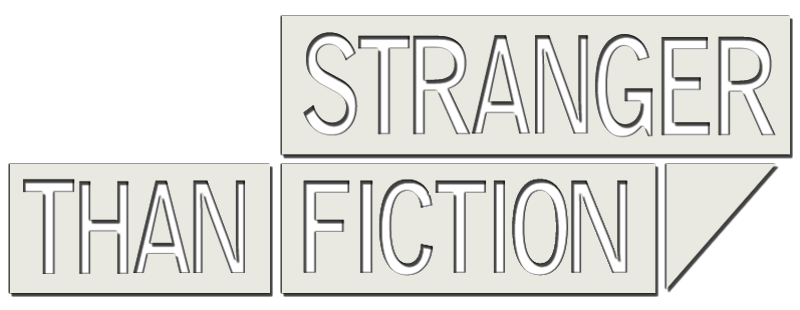
A Japanese sergeant was discovered in the jungles of Guam nearly 28 years after U.S. forces had regained control of the island in 1944. Click on the link below to read about the last straggler on Guam.
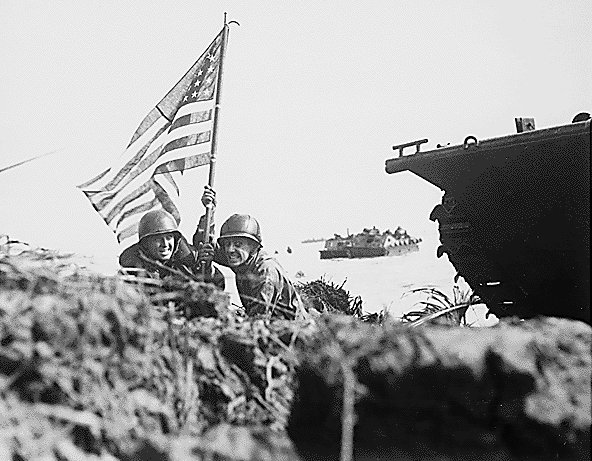
Marine Captains Paul O'Neal (left) and Milton Thompson (right) plant the American flag eight minutes after U.S. Marine and Army troops landed on Guam.
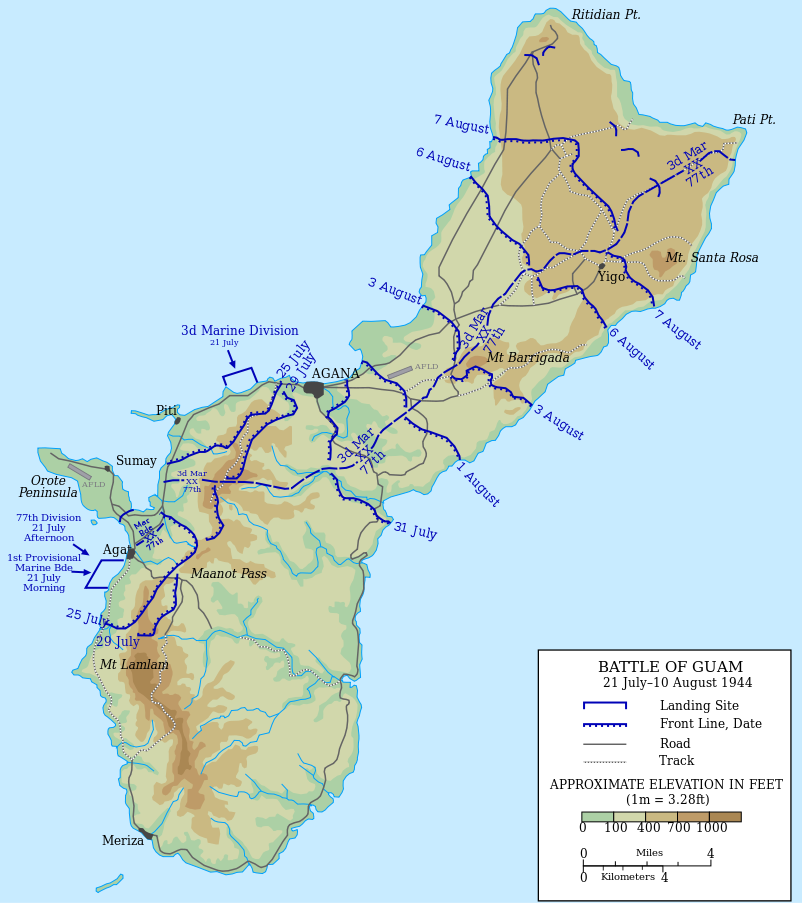
Map showing the progress of the Guam campaign.
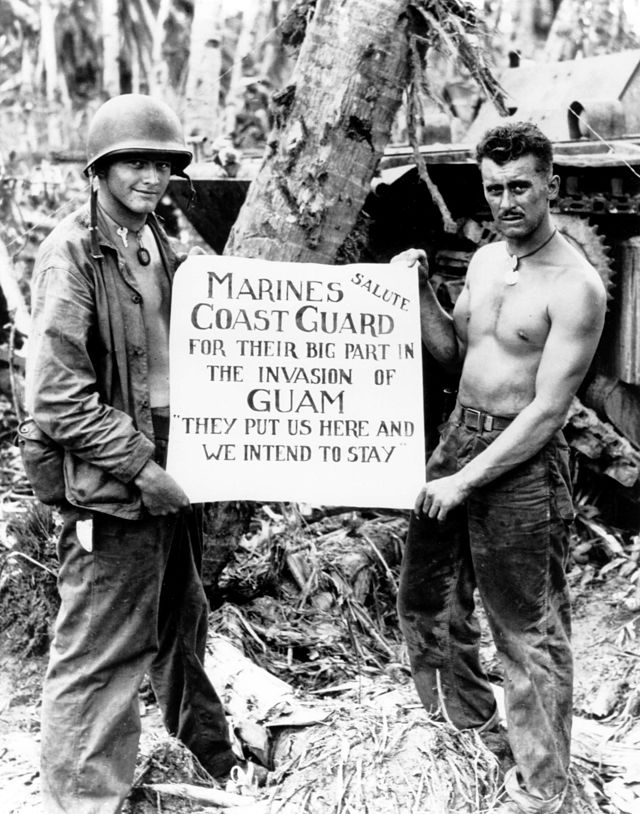
U.S. Marines show their appreciation to the Coast Guard.
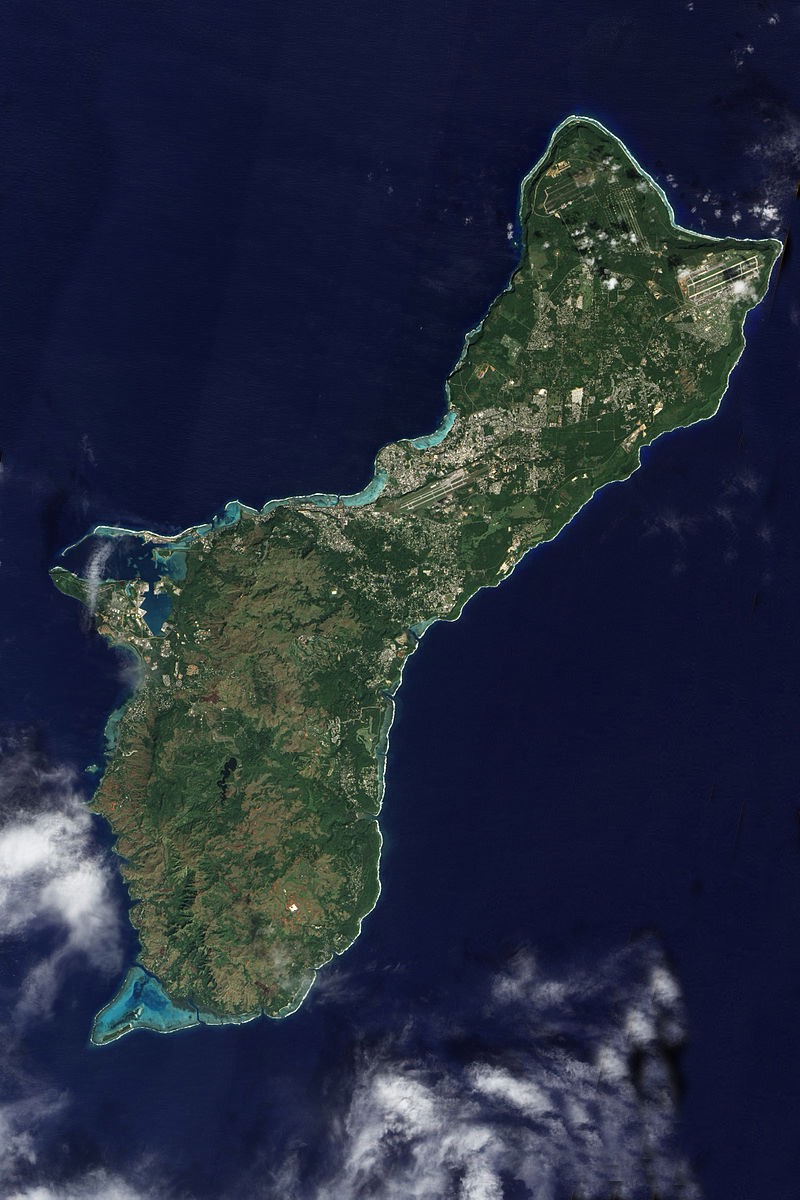
Satellite map of Guam.
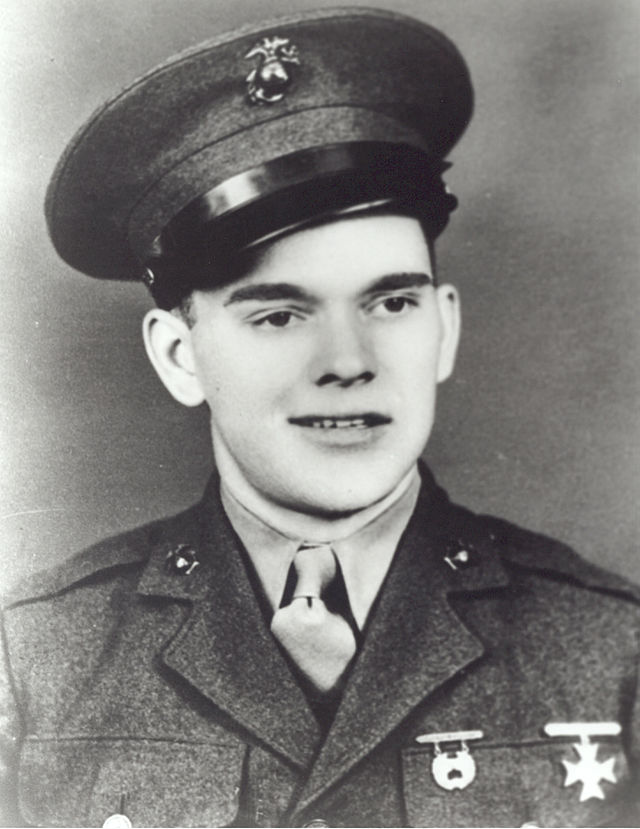
Pfc. Leonard Foster Mason (February 22, 1920 – July 22, 1944) served in the United States Marine Corps during World War II. He was posthumously awarded the Medal of Honor for heroism during the Battle of Guam where he was mortally wounded.


